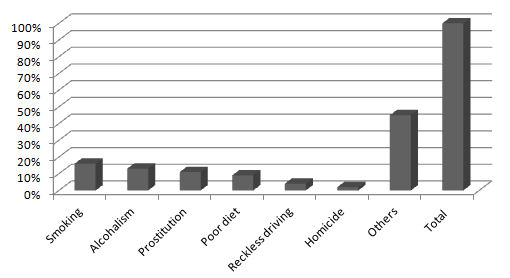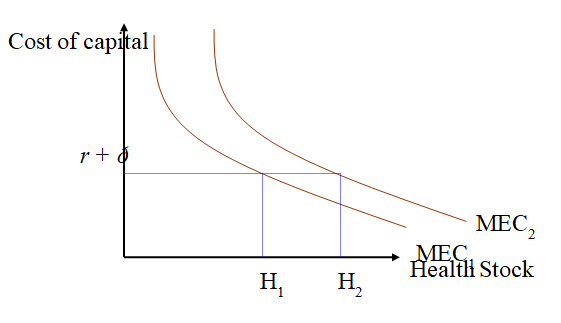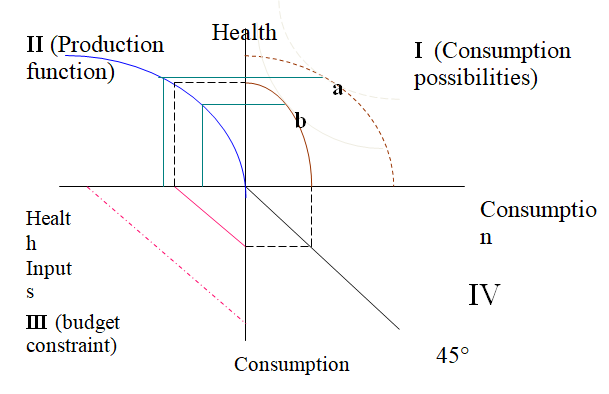The Progressivity of Health Care Finance
One of the main objectives of millennium development goals was to have universal healthcare services to everyone in the world at a cost that is affordable. This responsibility was laid on governments of various countries for implementation. This noble idea was to ensure that cases where people die not because of the complexity of the diseases they suffer from but because of their inability to pay for the hospital services are eliminated.
Various governments around the world have tried to come up with policies to help ensure that this goal is realized. However, Wagstaff, Yip and Hsiao (2009, p. S27) say that realization of this goal has remained a challenge to many governments. The costs of healthcare services are very high, especially due to the instruments and type of medication that some ailments require. Efforts have been made to ensure that most of the diseases can be treated at costs that are affordable to the poor.
The policy is always meant to protect the poor from being unable to access healthcare services because of the increased costs. The government of the United Kingdom is one of the many governments that have tried to achieve this millennium development goal by ensuring that healthcare services are affordable to every citizen of this country.
Progressive health care finance has been considered as the most appropriate way through which this goal can be achieved. Wagstaff, Yip and Hsiao (2009, p. S56) say that healthcare services have remained very expensive, and someone must bear the cost. For the poor to be in a position to access hospital services without paying the exorbitant fee that these services cost there must be a way that the cost will be paid by others who are in better position to pay for these services.
This must happen in order to avoid a scenario where the government is forced to foot these bills. It is upon this that the progressive health care finance has been introduced in this country and many other countries around the world. As the name suggests, this health care finance is progressive in nature based on the earnings of the individuals. Those who earn higher salaries would be expected to pay more, while those with lower pay always pay a lesser amount towards this fund.
The fund is always collected by the organ assigned by the government specifically for this purpose. Many countries have established National Health Insurance to be responsible for this task. This body acts as an insurance scheme where people are allowed to pull together towards financing the health of every citizen of the country.
The rationale in this case is that not everyone will fall sick at the same time. For this reason, those who are of good health, which is always the majority, will health in contributing towards payment of the few who are hospitalized.
The policy has worked in many countries around the world. However, it has also met a number of challenges in its implementation. Some people have complained why they are forced to pay more simply because they are earning more while when they go for these services they get the same treatment. They consider their effort not to be commensurate to what they get when they visit these facilities for healthcare services.
Critics have also faulted this policy as being communist in nature and that it encourages laziness. One group of the society are forced to work very hard in order to pay for health services of another group who may be paying either too little amount of money or none at all. This is seen as transferring the burden of one group to another group. Others have criticized this program as not being all inclusive.
They say that people can easily avoid contributing to this scheme because there are no mechanisms set in place to help monitor the informal sector. Those working in the informal sector and without a set wage rate can easily abuse this scheme by paying lesser fee or not paying at all, claiming that there were no earnings in that particular period.
Despite these challenges, this idea has massively helped improve health of the citizens of this country. The United Kingdom is one of the few countries in the world that has come closest to achieving this millennium development goal with the help of this scheme. This scheme has been an umbrella that covers the cost of every citizen of this country irrespective of their financial status.
This has seen most of the killer disease which were common in this country about two decades ago completely eliminated. These services has helped offer standard healthcare to all. Although the rich may consider going for private hospitals where the services could be a little better than those offered by government at subsidized fee, the poor can now get treatment from government hospitals without worrying the amount of fee they will have to pay for the service.
It is the wish of the government to improve its health services to all the citizens, and for this to be realized, there must be an increased amount of money to cater for the improved services. It is on this basis that the government developed this progressive health care finance. Those who earn more money would help improve the services of the hospitals by paying more to this scheme.
The society has come to appreciate the importance of this policy, and the resistance it received when it was first introduced has gradually disappeared. As Wagstaff, Yip and Hsiao (2009, p. S87) say, the policy has seen the country develop excellent healthcare facilities for the nationals of this country. In other countries such as the United States, this policy has been very helpful in ensuring that the health care service offered to the people is affordable.
How Can the Government Influence Health Behavior Decisions
According to Wagstaff, Yip and Hsiao (2009, p. S87), most of the health complications are always borne out of the behavior of people and the decisions they make in line. This scholar says that the kind of health one has is always directly related to the kind of lifestyle one leads. For instance, smoking or excessive taking of alcohol is a lifestyle that is common in this country, especially among the youth. No one is always born a drunkard. It is a behavior one picks up as one grows.
Similarly, smoking is always a decision made by individual, and in most cases, people start smoking when they are past adolescent stage. This means that the behavior is acquired when one is an adult which is an age where one is trusted to be able to make decisions that are rational.
At early stages of life, these people are subjected to various forms of education which point out to them the fact that smoking or excessive drinking of alcohol is harmful to their health. They know that some ingredients in a cigarette are dangerous to their health, but they ignore all these and engage in chain smoking that has direct impact to their health.
Currently, HIV/AIDS is a pandemic all over the world. Although the problem is not as serious in the United Kingdom as it is in other countries, there has been a worrying trend in this country within the past one year where the rate of infection has been considered to be on the rise. The government statistics do not come out clearly to demonstrate this because some of the victims would prefer their identity to be unknown and therefore, go to private hospitals where their demands would be respected.
Obesity is also becoming an issue to worry about. As Wagstaff, Yip and Hsiao (2009, p. S116) note, there has been an increasing cases of obesity in this country over the past few years. Obesity comes with various health complications, and if not well addressed, an individual can develop a series of diseases that can have serious negative effect to their health.
The decision to embrace a certain behavior is always made by an individual. For instance, it would be the decision of an individual to engage in irresponsible sexual behavior that may expose him or her to infectious decisions. It is also the decision of an individual to become obese due to irresponsible diets and lack of exercise. However, after acquiring diseases related to their irresponsible behavior, it ceases to be their personal problem. It now becomes a family and a societal problem.
Such an individual may not be able to work, and he or she would need the health care services offered by the government. They will need support from the society to overcome their health complication, and the government will be expected to play a role in elevating their status. It is therefore, a fact that no decision can be said to affect the maker.
It is true that the maker may bear the greatest impact, but this impact will spread to other members of the society and finally to the government. For this reason, government has all the right to influence this behavior because it is one of the stakeholders who may be negatively affected by some of the consequences of this behavior.
The government plays are very important role in ensuring that the health behavior decisions of its citizens are influenced in a way that would put them into lesser risk. The following graph shows some of the behavior that may put an individual into health risks.
Some of the Behavioral Factors that Puts an Individual at Health Risk

Source: (Wagstaff, Yip and Hsiao 2009, p. S72)
It is clear from the graph above that there are some behavioral factors that put an individual at risk, and therefore, must be regulated by the government. Smoking is one of the leading causes of lung cancer among other health complications. In order to deter or discourage this behavior, the government has been increasing tax on this commodity. This has seen its price go up.
The government has also introduced a law that prohibits sale and consumption of cigarettes and alcohol to individual below the majority age. In order to curb reckless driving which is also listed as one of the factors leading to health complication, the government has developed strict traffic laws, and the enforcement agency has been very swift in ensuring that this law is not violated.
However, as Wagstaff, Yip and Hsiao (2009, p. S132) say, these laws are very important in deterring individual from engaging in these behavior, but this may not change their thinking towards their habits. These scholars say that the best approach to deal with this issue is to make the society believe that these decisions they make, and the kind of behavior they engage in have direct impact on their health, the social well-being of their loved ones and to the government.
They must appreciate the importance of desisting from these behavioral factors. Their main reason of avoiding this behavior should not be because of the law, but should be because of their own conscience. The law will always remain on paper, and once it is not appreciated by people, it implementation can be a big challenge.
However, when people appreciate it, they will defend it, a fact that will help enhance positive behavior. The government should therefore, engage in civic education. It should make the society appreciate the need to avoid some behavior. This education should be started in schools and colleges before it is rolled out to their entire public using the media.
Grossman Model of Demand for Health (Increasing Food Prices and Wages)
Grossman model of demand for health is based upon the premise that health is always determined by various factors and medical care is just one of them. Some of these factors include the work environment, the social class, and employment status, housing conditions, income, heating, diet, education and lifestyle.
These factors have varying weight and in order to determine their importance, there should be an understanding of possible links that exist between the resources, the behavioral factors and health. Grossman model holds that individuals value health and they are always willing to allocate their resources in order to produce health (Wagstaff, Yip and Hsiao 2009, p. S97). This model gives a detailed analysis of health economics, and how different factors play off in the production of health.
According to this model, although people value health so much, it has not been given top priority by the populace. This explains the reason why people still drive recklessly, smoke, have poor diets and drink excessive alcohol despite the knowledge that they are dangerous to their health. In this section, the focus will be on two factors which are the increase in prices and wages as discussed in this model.
Changes in Wage Rates
According to this model, changes in the wage rates have direct impact on production of health. This model considers health as a product that is produced at a cost. This cost will be incurred by people through their contributions. The contribution can be in the form of the National Health Insurance Fund or a direct contribution made through the private health institutions.
The amount of resources that people will be willing to commit towards this production process is always dependent on the wage rate of the people. If people earn more, they will be able to pay more towards this production because of their increased disposable income. The graph below helps in demonstrating this fact.

Source: (Wagstaff, Yip, & Hsiao 2009, p. S41)
According to this fact, health stocks are dependent on health capital. For this reason, an increment in wage rate (W) increases returns on healthy days. This would make the optimum level of health (H) to be higher. It is also important to note that investment into production of health needs time as an input.
This has an effect of increasing the overall cost of production of health. Balancing these factors of production will help in ensuring that the product is delivered at a cost that is relatively affordable to all.
Inflationary Food Prices
According to this model, food prices have direct impact on the production of health. This takes place in two fronts. The first front is on the kind of diet that individuals will be forced to contend with in cases where the prices become inflammatory. As was discussed above, health starts from what one eats. Healthy eating is part of producing a healthy society. This is demonstrated in the graph below.

Source: (Wagstaff, Yip, & Hsiao 2009, p. S46)
When the prices of food items become too high, individuals will be forced to contend with poor diets because of their reduced purchasing power. This factor will increase chances of diminished health conditions. The second factor is on the ability of the people to pay for the production of health.
This model holds that an increase in prices of products has the same effect as reduced income. This is because the same amount that was used in financing production of health products will not be enough. This means that the budget will be constrained as the focus will shift from production of health to other factors considered more basic.
Reference
Wagstaff, A, Yip, W, & Hsiao, W 2009, ‘ Equity in the finance of health care: some further international comparisons’. Journal of Health Economics, vol. 18. no.3 pp. S1-S156.